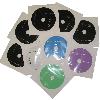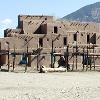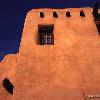

Topics: Gadget Tags: Adobe View |
Topics: Gadget Tags: Adobe View |
Tags: Adobe View |
|||||||||
Tags: Adobe View |
the kinda lame O for the Opera web browser which is painfully easy to overlook or misinterpret And here s where we get to the entire point of this entry The icon travesty from Adobe What the f Seriously I defy you to show these icons to anybody not already familiar with Adobe s latest round of CS products and have them comprehend what the associated application Tags: Adobe View |
Adobe Bauweise Tags: Adobe View |
|||||||||
|
|
Adobe is a natural building material made from sand, clay, manure and water, with some kind of fibrous or organic material (sticks and/or straw,), which is shaped into bricks using frames and dried in the sun. It is similar to cob (cob (building)) and mudbrick. Adobe structures are extremely durable and account for some of the oldest extant buildings on the planet. In hot climates, compared to wooden buildings, adobe buildings offer significant advantages due to their greater thermal mass, but they are known to be particularly susceptible to earthquake damage.
Buildings made of sun-dried earth are common in the West Asia, North Africa, West Africa, South America, southwestern North America, and in Spain (usually in the Mud�jar style). Adobe had been in use by indigenous peoples of the Americas in the Southwestern United States, Mesoamerica, and the Andean region of South America for several thousand years, although often substantial amounts of stone are used in the walls of Pueblo buildings. (Also, the Pueblo people built their adobe structures with handfuls or basketfuls of adobe, until the Spanish introduced them to the making of bricks.) Adobe brickmaking was used in Spain already in the Late Bronze Age and Iron Age, from the eighth century B.C. on. Its wide use can be attributed to its simplicity of design and make, and the cheapness thereby in creating it.
A distinction is sometimes made between the smaller adobes, which are about the size of ordinary baked bricks, and the larger adobines, some of which may be one to two yards (2 m) long.







